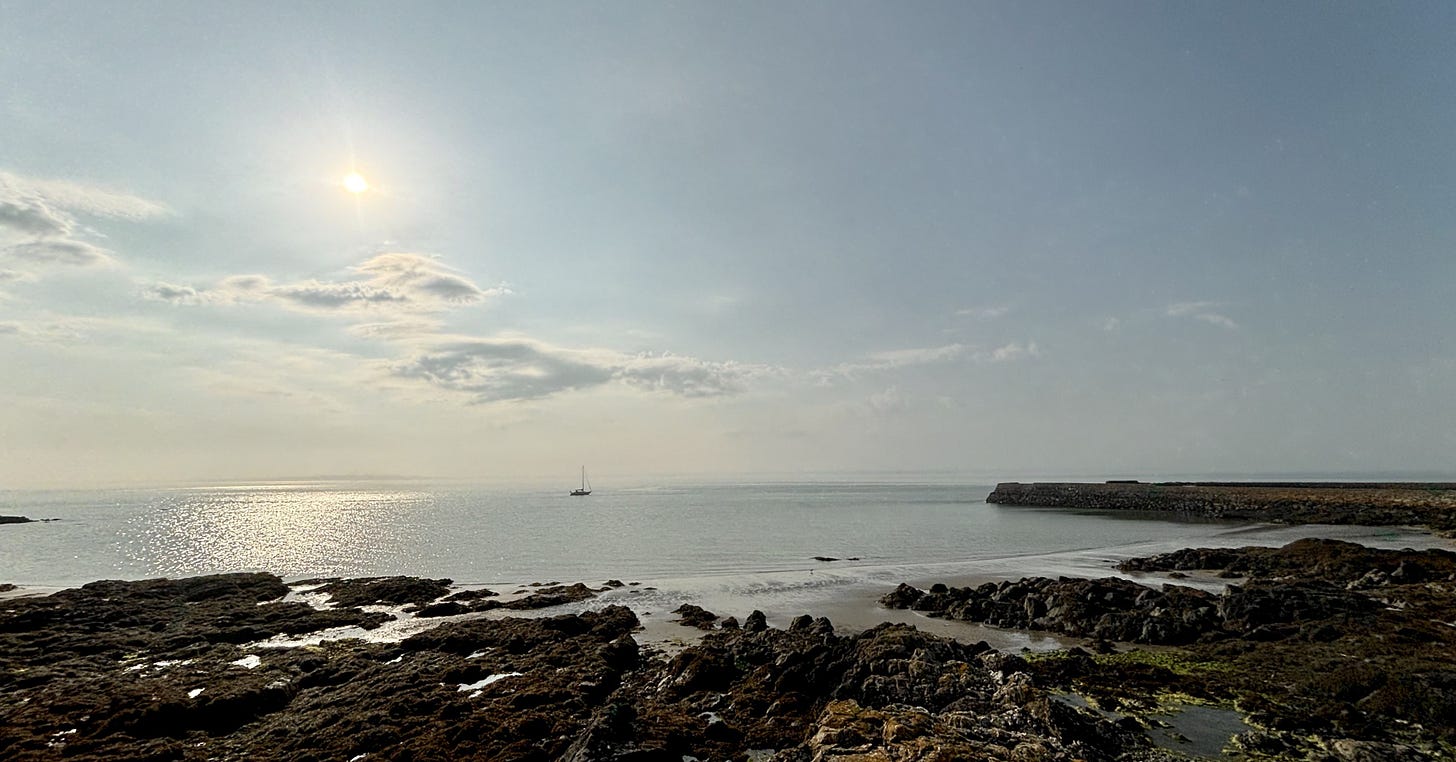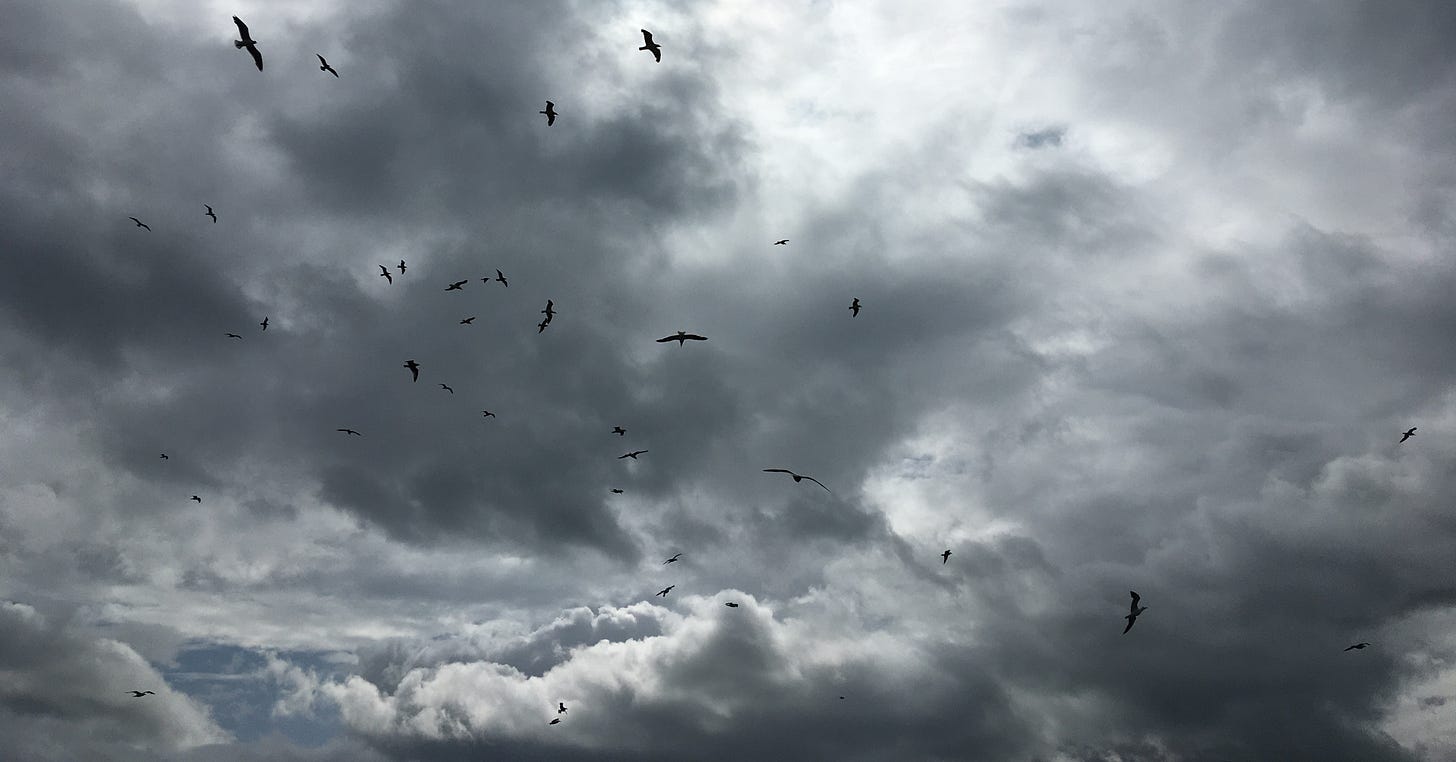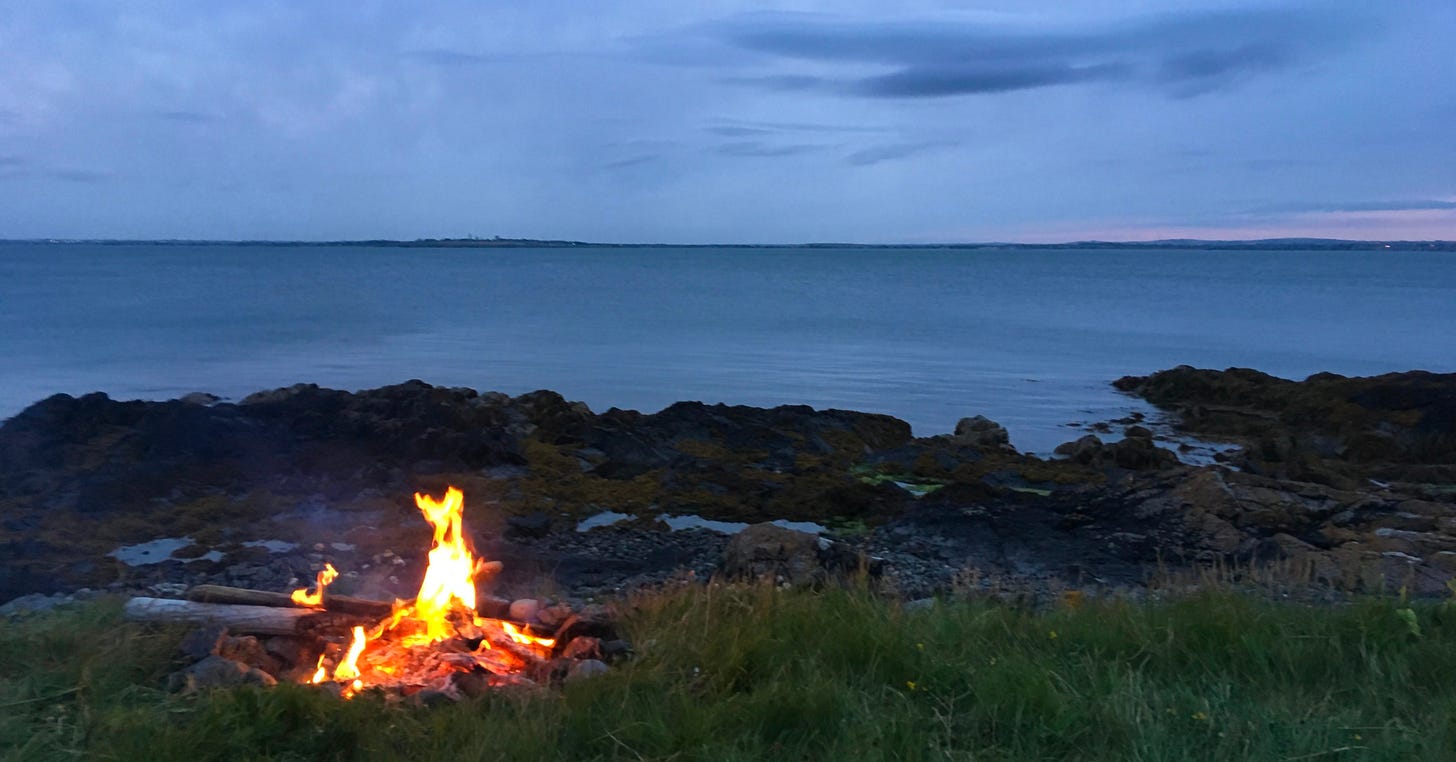I put my phone into a drawer and closed it.
Brief moments of transcendence that make the digital realm seem small.
While on holiday in Ireland, I put my phone into a drawer and closed it. For a week it would remain there. Staying in a remote part of the Irish coast is an ideal setting for tuning out of technology; perhaps it is too easy a challenge. But far from a new tradition, this dates back to my childhood. Most years, I would stay with family in an old, remote house by the coast, which has an unwritten rule: no radios, TVs, computers, or any other kind of electronic media technologies. I never resented it, as it felt more like a liberation than an imposition. But recently it has become harder.
I don’t generally struggle to put my phone down, but with each successive year it feels like an increasingly radical act. Our rhythm of communication has increased, while the polite time to respond has decreased. The digitalisation of shopping, photography, parenting, socialising and organisation requires a smartphone. As technological entanglement increases, our real environment can become secondary to what the political commentator Walter Lippmann described as a pseudo-environment.
Each person carries about with him a large and varying collection of images which in some way or other reflect, rearrange, simplify, elaborate or distort the real environment with which he is connected.
Superficially, our real environment might seem boring in comparison to our pseudo-environment, which has limitless information and sensationalism. Yet the real environment has a depth and power that can suddenly assert itself. We can all relate to the feeling of being overwhelmed by the majesticness of a huge waterfall, the stillness of an unspoiled pine forest, or a glimpse of the Milky Way. Brief moments of transcendence that make the digital realm seem small.
I once knew an artist who was passionately convinced that the use of plastic to make objects, with its uniformity of tones, had dulled our ability to perceive true colours: vibrant and complex. It struck me as an eccentric concern at the time, but I began to see his point. Reducing the visual complexity of the world under-stimulates our minds, making us and our environment more artificial. During a walk one day, he looked up to the sky and said.
At least we have the clouds. We still have the clouds!
Being sensitive to our surroundings requires the engagement of all our senses. Our brains are built for a richness of experience, since our senses naturally interact and overlap through multimodal perception. Researcher Asteris Zacharakis from the University of Thessaloniki describes this fascinating process.
Research has shown that no single sense is perceived independently from the rest. Instead, the human brain combines all the available sensory information when forming an overall experience, a phenomenon known as multimodal perception.
For those taught that the senses are strictly segregated, this represents a radical departure. Rather than our senses being like a series of individual streams, they operate more like a river through which all of them can flow: smell can affect taste, taste can affect sight, and sight can affect hearing. Multimodal perception requires us to re-evaluate seemingly ordinary situations. For instance, a jazz band playing at a restaurant is not simply adding to the atmosphere, but literally changing the taste of the food with their music.
Through an understanding of multimodal perception, scientists are trying to make sense of synesthesia, a condition in which the stimulation of one sense leads to the involuntary experience of another. It is believed that about 2—5% of the population has this condition. Possibly the earliest report of synesthesia was in 1690 by the philosopher John Locke, describing a blind man who saw the colour scarlet in response to the sound of a trumpet — although it is unclear whether this may have been metaphorical and not literal.
Interestingly, some scientists believe that everyone is born with some degree of synesthesia, but that this ability diminishes over time as connections are pruned from the infant’s hyperconnected brain. A Psychology Today article describes this as follows.
Synesthesia often appears during early childhood. Research has shown signs of a genetic component; there is some debate over whether everyone is born with some degree of synesthesia, or if it’s a special perception of the world that only some individuals share.
With relatively little known about synesthesia, one might speculate whether we can develop this ability to some degree, possibly through regular engagement with rich sensory environments. Conversely, in an artificial, desensitised, and screen-rich environment, we may dull this ability, as warned by Sydney J. Harris.
The real danger is not that computers will begin to think like men, but that men will begin to think like computers.
By the Irish coast, in the old remote house where I am staying, I find that it takes no act of great will, only a few simply lived days, to become attuned to certain rural rhythms; the lunar cycles and their effect on the tides, or waking up to see the seascape renewed with unique patterns and colours, a birdlife which outnumbers us humans, singing their morning songs and late-night nocturnes.
With our time drawing to an end, we lit a fire by the beach, and the family gathered around. With less distraction, we had grown closer to each other and the land. The slow-fading northern sunset gradually becomes darkness. The birds loudened. Light from a nearby city obscured the starlight, concealing the Milky Way. The sea’s waves are audible but not visible. Everyone goes to sleep, but I stay up in the hope of seeing a meteorite.
A group of oyster catchers began to call to one another. Not mellifluous like song birds, but music no less beautiful. I wanted to capture it, so I returned to my room and retrieved my phone. I decided my first use upon returning to this technology should be directed towards the world that had absorbed my attention. A recording that would act as a reminder that our world expands and awakens when our mind is absorbed in the richness of the real.





Have you stumbled across the YouTube video featuring Skunk Baxter presenting to a conference of engineers in which he reflects on how certain colors correspond to notes played on a guitar when they vibrate at higher frequencies? Maybe synesthesia is a response to these connections in the physical world, as well as being a phenomenon of human perception.
That's an intriguing way to think about light! I'll have to get that into a poem somehow. Thanks!